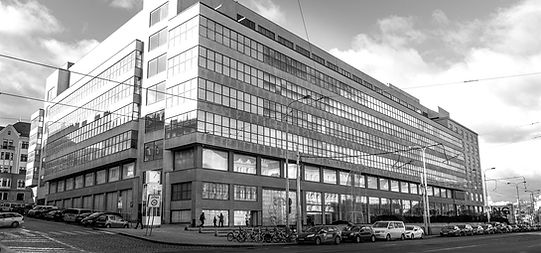

Performative Urbanism Lab for Spatial,
Social, and Scenographic Experimentation
this space is for you/
cet espace est pour toi
Conceived by, Direction & Dramaturgy: Shauna Janssen
Creative team & research associates:
Digital scenography:Kévin Pinvidic
Unity and Depth Kit consultant: Olivia McGilChrist
Depth Kit consultant:Ricardo Morejon
Choreography: Leslie Baker
Soundscape: Shauna Janssen
Technical advisor (ZùMTL):Véronique Levert
this space is for you/ cet espace est pour toi is a site-specific mixed reality (MR)environment designed as a conceptual place and provocation for considering ‘refugia’ (renewal) and spatial (re)orientations for thinking and practicing the future place(s) of performance.
For Donna Haraway the term ‘refugia’ describes the spatial hideaways “from which diverse species assemblages (with or without people) can be reconstituted after major events.” (2015, 159)
this space is for you/ cet espace est pour toi was created for the 15th edition of the Prague Quadrennial of Performance Design & Space (PQ23), within the context of the Performance Space exhibition themed “acts of assembly”:
«Performance spaces create new realities. They allow artists to fully coalesce with the technologies and materials used. They provoke an audience to think critically, to engage in art and give artists ground to express themselves. This forum asks to consider how the post-pandemic world will treat the performance spaces as platforms enabling communication and encounter. We will investigate newly emerging virtual spaces and their effects on the communities that assemble there.»
- Andrew Filmer, Curator Performance Space Exhibition PQ23
With this space is for you/ cet espace cet pour toi the creative process draws inspiration from Sara Ahmed's conception of queer disorientations (2006) that MR technologies can stage, and the potential that MR environments have to conjure and reveal a more tender relationship with the atmospherics of place.
«(Q)ueer volumes are full of the pleasure, tenderness and excitement of opening worlds. Hacked scanners, misused models, lumpy bodies all create glimmering deviations, which rotate as alternative volumetrics.» (Helen V. Pritchard, in Volumetric Regimes, 2022, 165)
Reorienting MR technologies towards scenographic and performative practices (rather than solely as immersive experiences and interactive design tools) foreground “pluriversal” worldings (Escobar 2020) and "the porous boundaries between different orders of world, and between bodies and worlds." (Thornett 2020, 103)
Our research creation process engaged with archival materials, site-specific methods (attuning our selves to the spatial history of our site), and the dramaturgy of technologies of capture; 3D scanning processes (with applications such as Polycam), and the use of volumetric video capturing (DepthKit). this space is for you/ cet espace est pour toi is experienced with a Varjo-XR3 head mounted display (HMD), which features a pass-through - the ability to experience the superimposition or augmentation of virtual material and data in a physical place. The theme of disorientation became central to the dramaturgical ethos of working with the Varjo XR3.
«Queer becomes a matter of how things appear, how they gather, how they perform, to create the edges of spaces and worlds.» (Ahmed 2006, 167)
This project was supported by: ZùMTL + Concordia University's Creative Research Residency, with funding from the Office of the Vice President, Research & Graduate Studies, and the Fonds de recherche du Québec – Société et culture (FRQSC).


Site - Veletržní palác, Prague
The Performance Space Exhibition program for PQ23 took place at the Veletržní palác. Site-specific content for our MR performance space featured the functionalist architectural style of the Veletržní palác (constructed in 1928). Formerly used as Trade Fair Palace, since 1995 the building has been home to Prague's National Gallery and the exhibition of modern art. The site is also host and haunted by contested spatial histories. In 1949 the site was occupied by the Nazis and as a location to hold Jews before transporting them to concentration camps. In 1974 the building burnt down, and was reconstructed in the 1990s.



